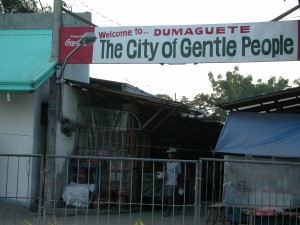 In May of 2003, after a budding email romance of nearly a year, my husband decided to come and visit. He scheduled his trip months in advanced and had no idea there would be strong warnings against overseas travel due to the SARS epidemic. Armed with a ticket that could not be rescheduled or refunded, he put on a surgical mask and sat down to a tiresome 22-hour flight, more brave, anxious and inquisitive than common sense might have dictated.
In May of 2003, after a budding email romance of nearly a year, my husband decided to come and visit. He scheduled his trip months in advanced and had no idea there would be strong warnings against overseas travel due to the SARS epidemic. Armed with a ticket that could not be rescheduled or refunded, he put on a surgical mask and sat down to a tiresome 22-hour flight, more brave, anxious and inquisitive than common sense might have dictated.
He flew into the Philippines second largest airport located in the large metropolis of Cebu City. We met inside the terminal and took a taxi to the nearby wharf to await yet another 4-hour boat trip on a fast-ferry, (as opposed to the large conventional, more comfortable ferry that takes over 12-hours) to my home Island Province of Negros.
From the moment he stepped off the plane, my husband started taking photos. He had never traveled outside of North America and found fascination with the different sites, scents, and personalities of the orient. I have linked a PowerPoint slide presentation of a few of his shots at the end of this post, but you can visit my flikr account for many more if you are interested.
His favorite memories include the 52 to 1 monetary exchange rate (now 42 to 1, 8 years later), the friendly, gentle Filipino personalities and the vivid colors that are traditional among most eastern cultures. What he found most interesting was our traditional housing, food, transportation, and the way we constantly bargain while shopping. His least fond memories include the heat, humidity, and smells of certain areas within populated areas (open waste-drainage ditches) and back alleys where they process poultry for cooking (searing off remaining feathers after initial plucking).


